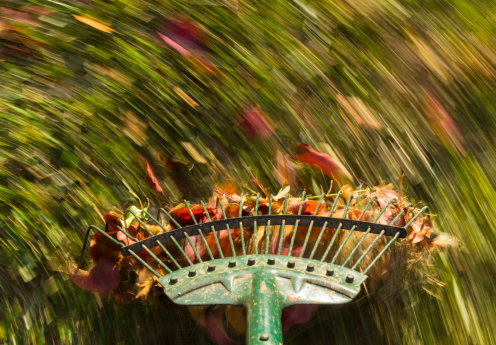Is raking leaves risky for your heart?

When it comes to raking leaves, your heart may not be in it, but the work certainly could impact your heart
That’s the word from two Advocate Christ Medical Center exercise physiologists, who say that raking is primarily an arm exercise, and arm exercises place more stress on the heart than activities in which the legs are used.
“The oxygen demand on the heart is greater when only the arms are involved,” said Mark Parsons, exercise physiologist in the cardiac rehabilitation unit of Christ Medical Center’s Heart, Vascular and Transplant Institute. “Heart rate and blood pressure both rise.”
Of course, the more vigorously a person rakes and the longer the period of time in which a person engages in the activity, the greater the demand on the heart, according to Parsons and his colleague, Pamela Loehrke, also an exercise physiologist in cardiac rehabilitation.
Now that leaves are changing color and preparing to drop onto lawns throughout the region, Parsons and Loehrke advise property owners to “know your limits” before going out to rake.
“If you are raking for a few minutes and begin to tire, stop and rest briefly,” said Parsons, who added that the need for rest breaks varies with a person’s conditioning.
The best way to pull or injure a muscle is launch into a vigorous exercise “cold,” both exercise physiologists said. That’s why they advise warming up the muscles before engaging in raking. “The best warm-up is a brisk, five-minute walk,” although some “easy stretches” also can help prepare the body, Loehrke said.
Other tips from the two exercise physiologists to make raking a healthy, aerobic activity include:
- Wear gloves that provide a better grip on the rake handle. “When you rake barehanded, you tend to grip the rake harder, and the gripping itself becomes an isometric exercise, adding even greater stress on the heart,” Parsons said.
- Use a standard-size rake. “Wider rakes can catch more leaves, but impact the heart more. Raking is much like snow shoveling. The smaller the shovel that you use, the less snow that you lift and the less strain you put on your heart,” Parsons stated.
- Whenever possible, engage the legs in the raking activity. “Rather than doing quick arm movements to rake, use your body and legs more to drag the leaves from one point to another,” Parsons said.
- Wear comfortable, but supportive shoes while raking.
- Drink plenty of water and other fluids to stay hydrated. “Raking, after all, is a strenuous exercise and requires the same precautions one would take in engaging in any competitive sports like running or when working out at the gym,” Parsons added. “The goal is to get your work done, while enjoying the physical benefits of a good exercise and avoiding injury.”
Related Posts
Comments
5 Comments
About the Author
health enews staff is a group of experienced writers from our Advocate Health Care and Aurora Health Care sites, which also includes freelance or intern writers.


















Thanks for bringing this up, Mike. You hear much more about snow shoveling but clearly this can be as taxing.
As a heart patient . Snow shoveling- blowing makes me tired & weak. The cold damp weather makes my feet & hands very painful. even with gloves and boots ( . due to diabetes. )
The cynic in me can’t help but ask why an article on cutting the grass never circulated. I don’t see how the risk raking leaves can be any greater than brisk walking. Especially, with respect to arm movement.
Thank you for the reminder…we do seem to forget about raking leaves. Snow shoveling is always on our minds.
Bonus tip: get a gym membership.